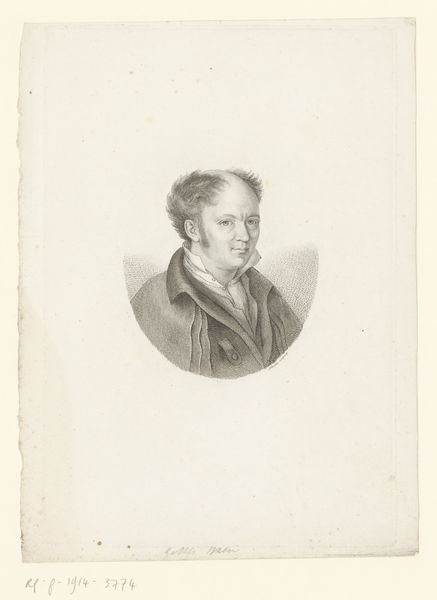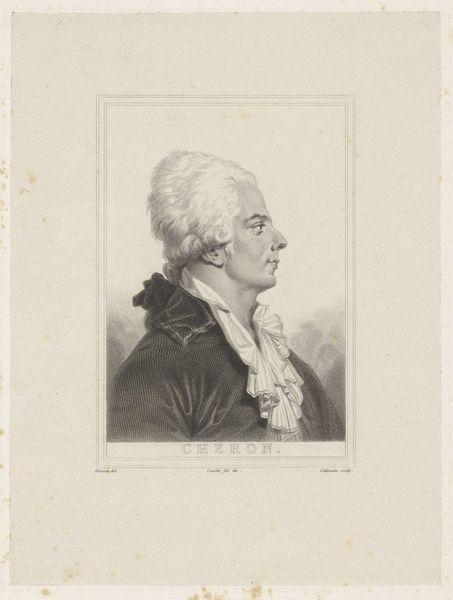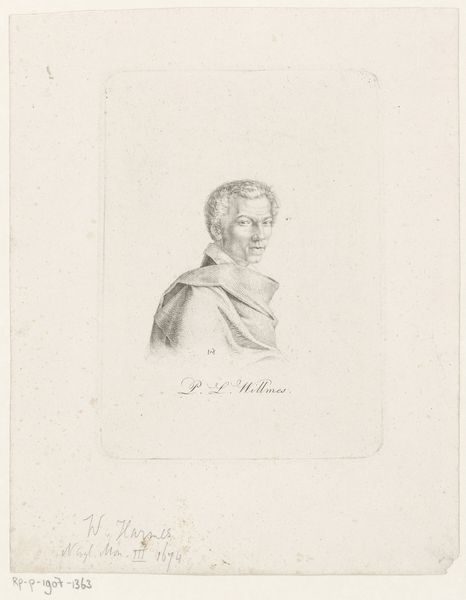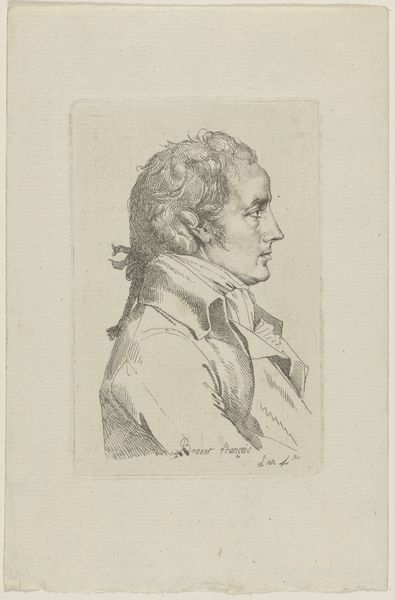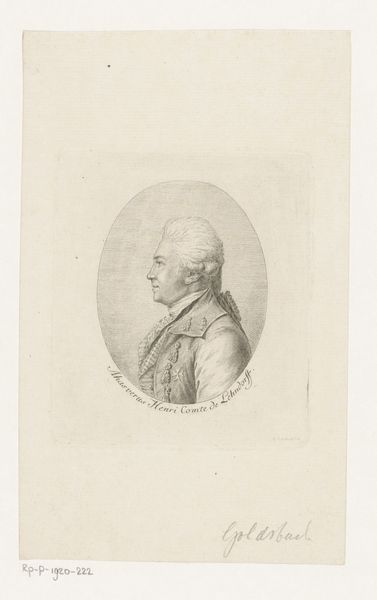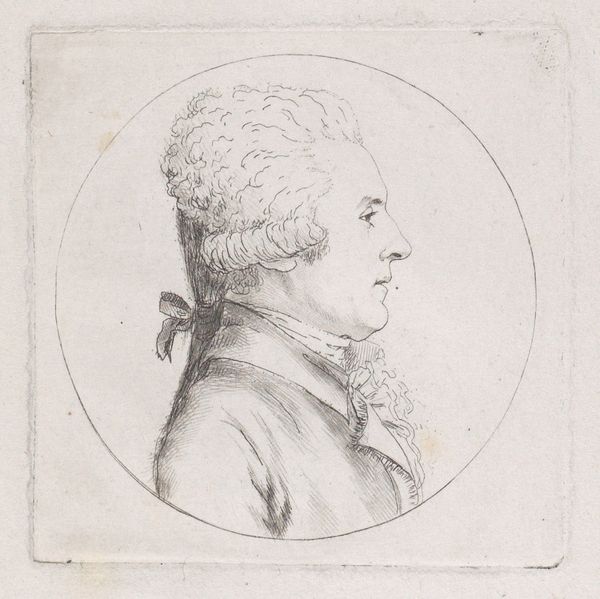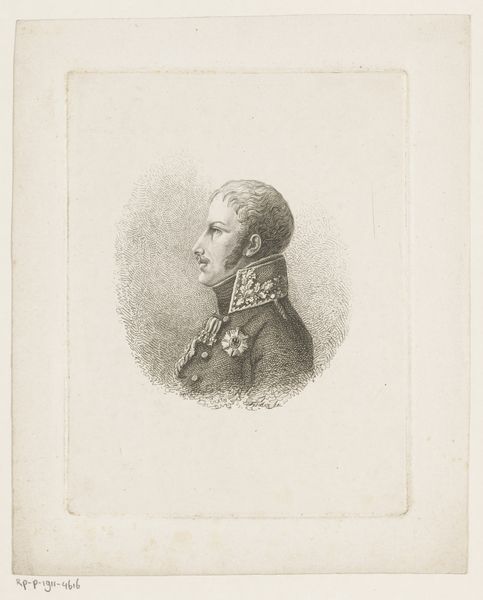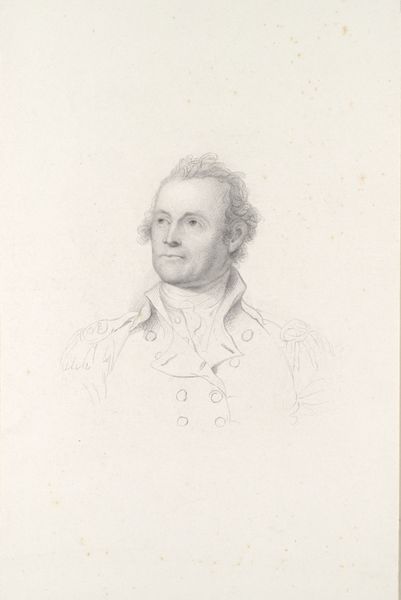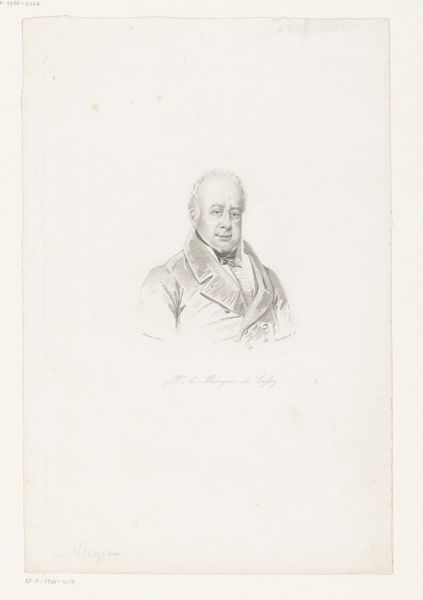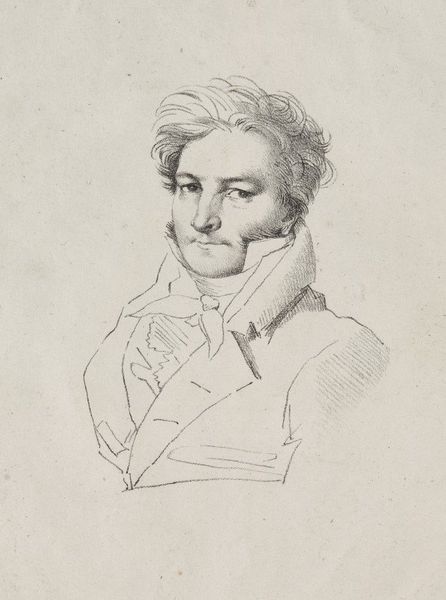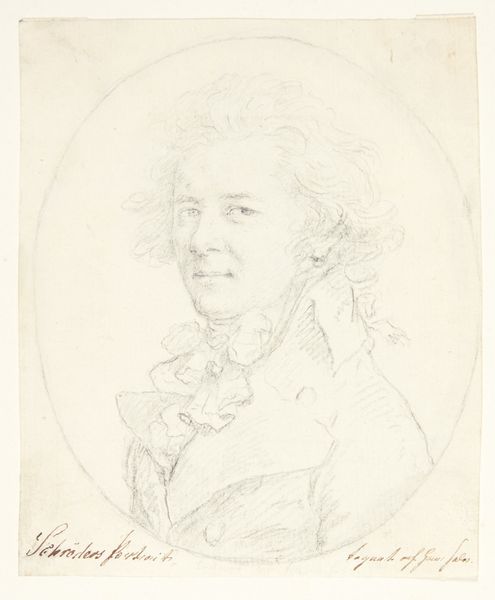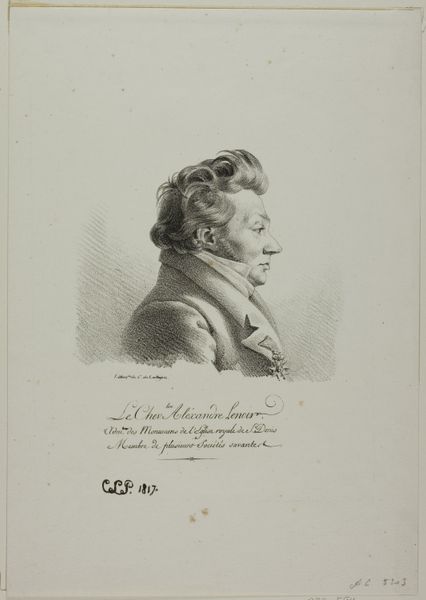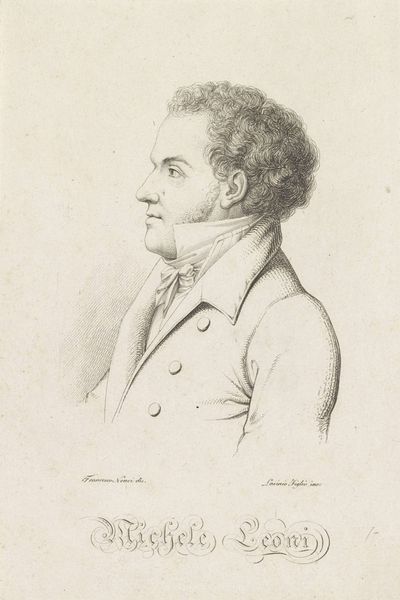
drawing, pencil
#
portrait
#
drawing
#
pencil drawing
#
romanticism
#
pencil
#
portrait drawing
#
academic-art
Dimensions: height 113 mm, width 88 mm
Copyright: Rijks Museum: Open Domain
Curator: Here we have Coenraad Hamburger's "Portret van Ary Scheffer," a pencil drawing from 1842. Editor: Oh, there's something melancholic about it. Like a faded photograph but drawn by hand. You know? He looks wistful, or perhaps a bit…bored? Curator: The beauty of this lies in Hamburger’s adept manipulation of line and shadow. Note the precision with which he renders the subject’s hair, versus the more loosely defined form of the garment. This juxtaposition draws attention to the sitter's intellectual capacities through an almost sculptural handling of his features. Editor: Sculptural, yes! That’s exactly it! There’s a real weight to his presence, even though it's just pencil on paper. Like he’s a statue contemplating… what? The fleeting nature of fame, maybe? Or maybe what's for lunch. Curator: I find the work exemplary of Academic art meeting Romantic ideals, blending precise rendering with emotional resonance, visible in the slight downturn of the lips and averted gaze. His profile embodies a certain artistic ideal popular at the time. Editor: Well, regardless of ideals, Hamburger really captured something. It feels intimate, like a private glimpse. Sort of like catching someone in a moment of unguarded reflection, sketching while nobody is looking. Even now, the mood lingers. It draws you in, doesn’t it? Curator: Yes, it does. Hamburger's keen observation, articulated through a command of line, produces a work that both documents and embodies the artistic and philosophical sensibilities of its era. It is a prime example of Romanticism in its purest form, realized through a traditional academic mode. Editor: I just love how a few pencil strokes can suggest a whole world of inner thoughts and feelings. It is fascinating really! Curator: Indeed. The layering of lines and tonal values builds a visual narrative, almost a quiet dialogue with the viewer. It resonates through time, as good art tends to do.
Comments
No comments
Be the first to comment and join the conversation on the ultimate creative platform.
